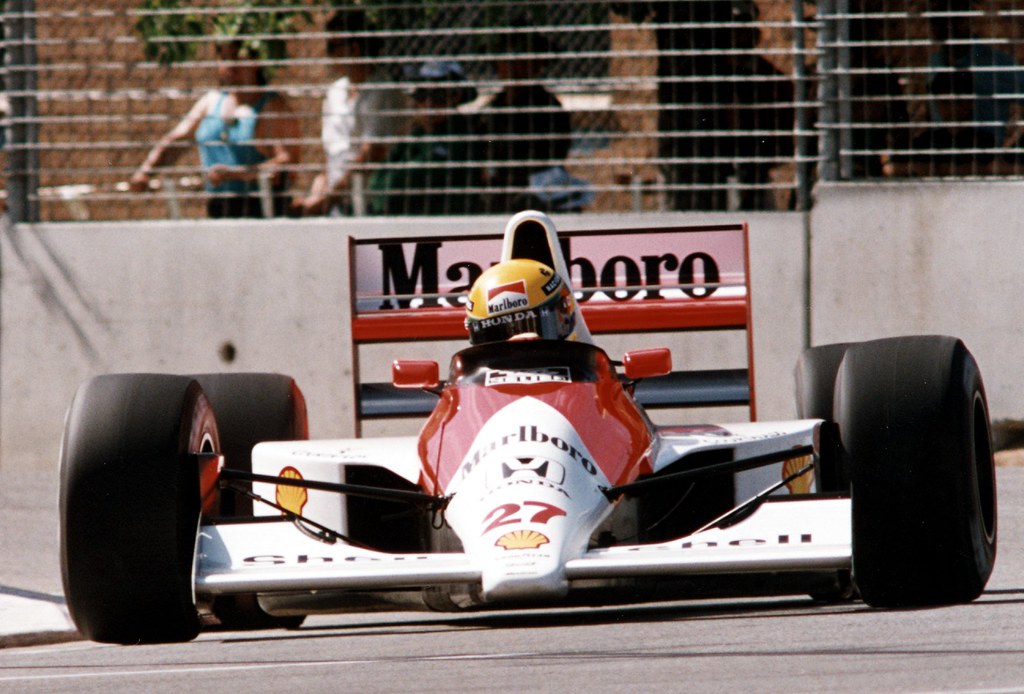The Adelaide Street Circuit holds an iconic place in the history of Formula 1 racing in Australia. Located in Adelaide, South Australia, this temporary street circuit played host to the Australian Grand Prix from 1985 to 1995 during the most competitive and advanced stage of F1 with turbocharged engines reaching extreme power levels.
With its flowing layout incorporating city streets and parklands, Adelaide produced great races and championship-deciding moments. Though it ultimately made way for the arrival of F1 at a new venue in Melbourne, the Adelaide Street Circuit left behind a lasting legacy on the sport in Australia.
History of the Adelaide Street Circuit
The Adelaide Street Circuit was purpose-built to host the Australian Grand Prix when Adelaide won the rights to hold the race starting in 1985. The 3.780 km track combined dedicated sections constructed in Victoria Park as well as city streets such as Wakefield Road, Rundle Road, and Dequetteville Terrace.
This gave Adelaide Street Circuit a fast sweeping layout with cars averaging over 190 mph in the F1 turbo era. In total, the circuit hosted 11 Formula 1 Australian Grand Prix from 1985 to 1995. Over 240,000 people attended the final race as interest reached feverish levels.
The intense title fight between Damon Hill and Michael Schumacher in 1994 perfectly encapsulated the drama of Adelaide’s time in F1. Schumacher’s clash with Hill ended both their races and secured the German his first World Championship by a single point in one of F1’s most controversial finishes.
Memorable Races at Adelaide
The 1986 Australian Grand Prix proved pivotal in crowning Alain Prost as that year’s World Champion. Nigel Mansell suffered a dramatic rear tire failure at 180 mph while leading the race in his Williams. Though he somehow managed to avoid crashing, Mansell’s blown tire ended his distant title hopes as Prost controlled the race for victory.
Extreme weather impacted the 1989 Australian Grand Prix on the Adelaide Street Circuit, as torrential rain caused multiple accidents. Future legend Ayrton Senna aquaplaned off in his McLaren from a dominant lead. Thierry Boutsen ultimately prevailed for Williams, capping off a chaotic wet race that saw only eight finishers from 26 starters.
Senna gained redemption with a superb drive on another wet track in 1991, lapping the entire field before officials stopped the race after just 14 laps due to the treacherous conditions. It became F1’s shortest ever World Championship race distance at the time.
The Circuit’s Unique Challenges and Layout
Unlike modern F1 venues featuring expansive runoff areas, Adelaide’s confines as a semi-street circuit posed special risks. The track narrowness left no room for error, especially on the 900 meter flat-out dash down Dequetteville Terrace and Brabham Straight reaching over 200 mph.
The Senna Chicane, named in memory of Ayrton Senna following his fatal 1994 crash, marked the end of the pit straight and required precision braking control to navigate at race speeds. Drivers also had to contend with bumpy surfaces and changing grip levels as the circuit used everyday city roads.
Still, Adelaide’s high average speed brought out the daring best from its combatants. Alain Prost once aptly described driving there as like “trying to write your signature on a paper in the middle of a hurricane.” The challenging nature of the track routinely identified the elite drivers.

The Shift from Adelaide to Melbourne
Adelaide’s F1 run ended when Melbourne secured the Australian Grand Prix rights from 1996 onwards. Seeking to expand the sport’s footprint in Australia, F1 executives and race organizers pursued an ambitious plan to construct a dedicated circuit in Melbourne’s Albert Park.
This new track allowed more paddock and spectator capacity compared to Adelaide’s confinement within a city landscape. Melbourne also appealed from a commercial perspective as a bigger market for sponsors and corporate hospitality.
Economic and Cultural Impact on Adelaide
Losing Formula 1 stood as a big blow to Adelaide after building an international reputation through hosting the Australian Grand Prix. Experts estimated F1’s departure cut the local economy’s income by over $30 million annually.
Beyond the economic fallout, the race brought valuable cultural exposure and tourism that now focused directly on Melbourne. However, Adelaide fostered a rich motor racing heritage that continued through events such as the Adelaide 500 V8 Supercars round.
Other F1 Races Held in Australia
Since 1996, the bustling Albert Park street circuit in Melbourne has cemented itself as F1’s Australian home. Successfully converting a public road course into the Grand Prix venue, Albert Park echoes aspects of Adelaide’s challenge but with modern upgrades.
Relative to Adelaide, Albert Park offers improved views for fans with added grandstands and its picturesque lake backdrop. However, drivers praise Adelaide’s faster long straights and flowing corners as providing a more exciting experience behind the wheel.
In the turbo era featuring 1000+ hp F1 cars, Adelaide highlighted the extreme performance thresholds of man and machine. Its legacy persists through a long list of memorable races that shaped driver legacies and captivated fans.

